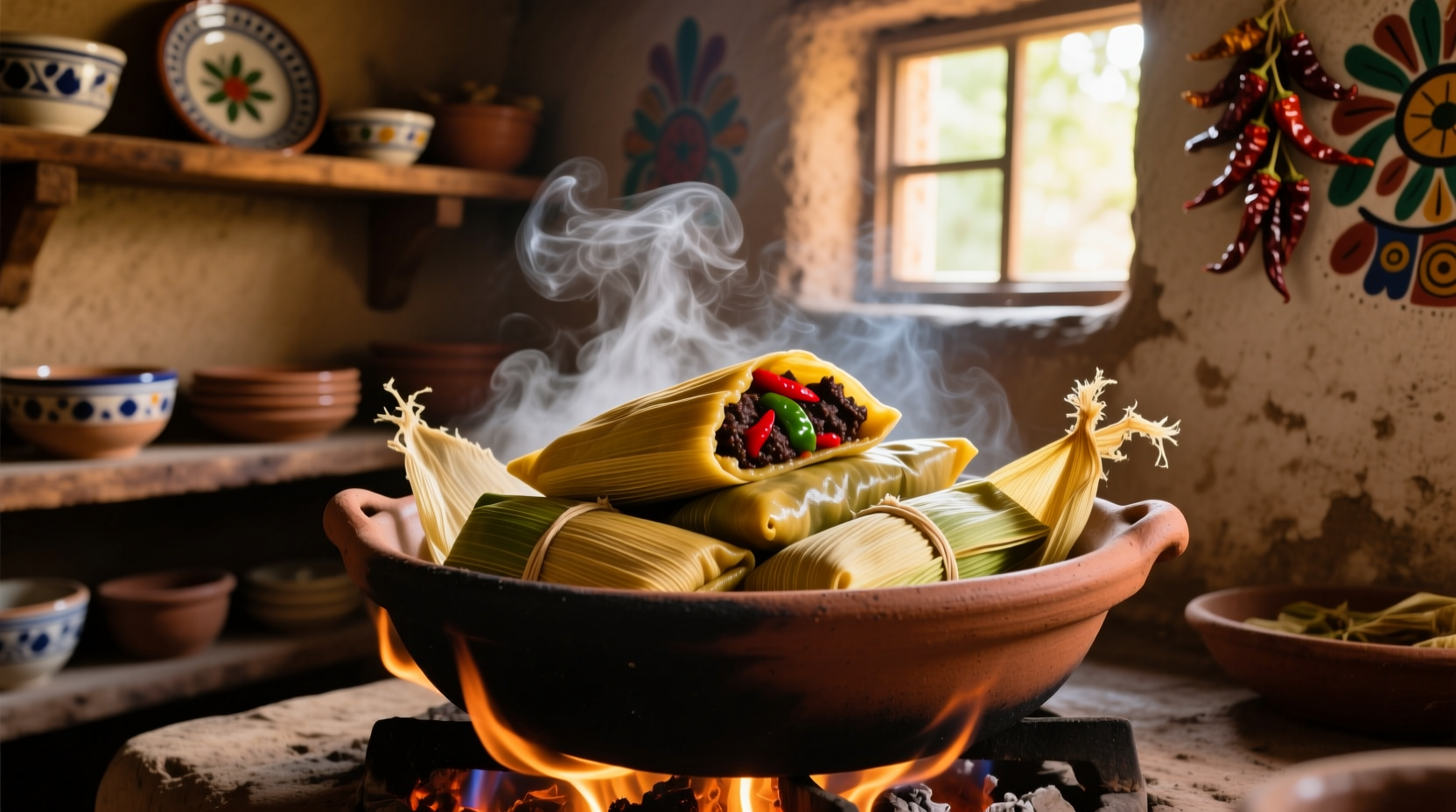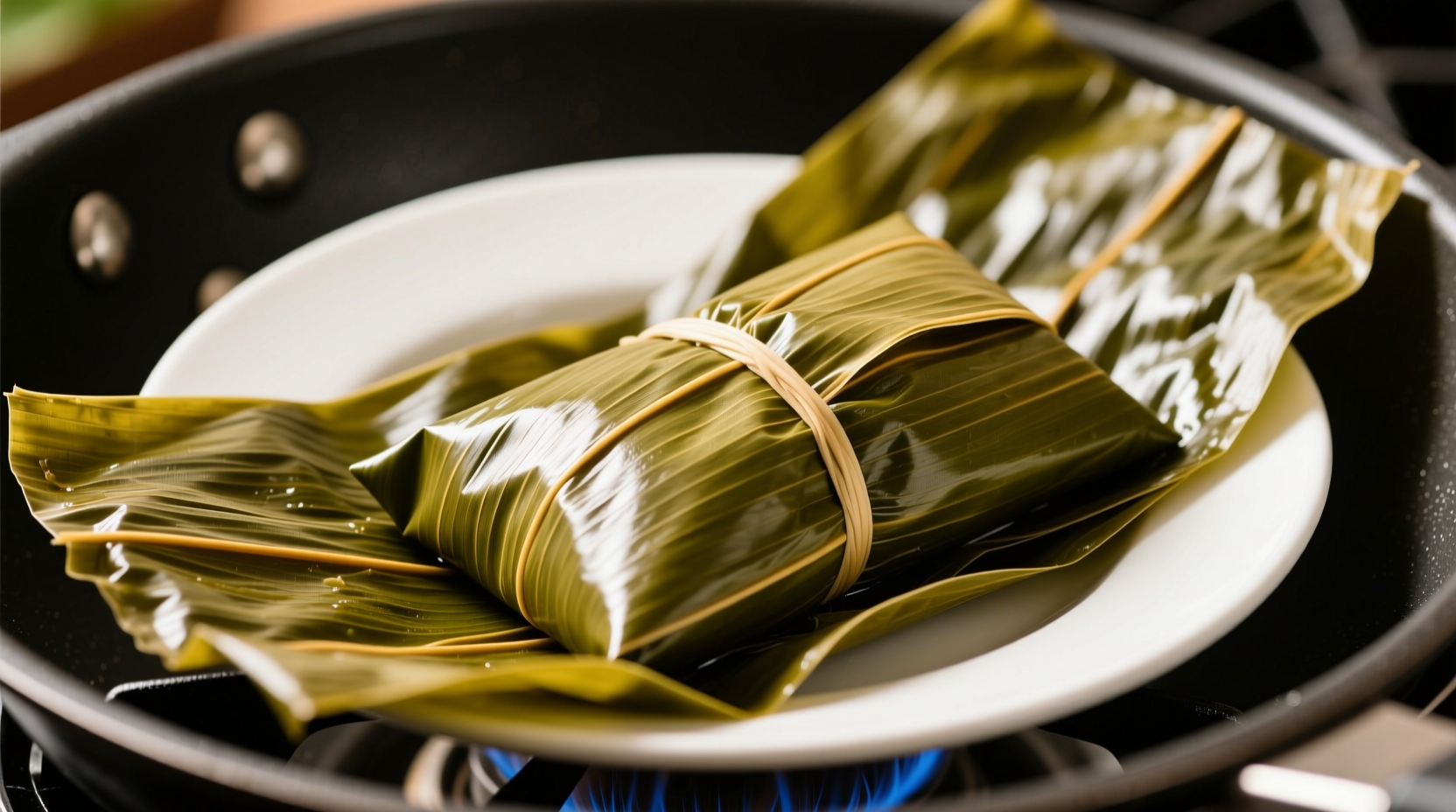Traditional tamales typically require 1.5 to 2 hours of steaming time after preparation, with total process time (including prep) ranging from 2.5 to 4 hours depending on batch size and method. The masa is properly cooked when it cleanly separates from the husk and reaches an internal temperature of 165°F (74°C).
When you're planning to make tamales, understanding the complete time commitment is essential for successful preparation. Many home cooks underestimate the process, leading to rushed results or scheduling conflicts. The cooking phase itself takes 90-120 minutes of active steaming, but the entire journey from soaking corn husks to serving finished tamales spans several hours. This comprehensive guide breaks down each phase with precise timing so you can plan your tamale-making session effectively.
Understanding the Complete Tamale Timeline
Creating authentic tamales isn't just about the steaming time—it's a multi-phase process that requires proper planning. Let's walk through each stage with realistic time estimates based on traditional preparation methods.
Preparation Phase: Setting the Foundation (30-90 minutes)
Before your tamales even hit the steamer, significant preparation work must be completed:
- Husk soaking: Dried corn husks require 30-60 minutes of soaking in warm water to become pliable
- Filling preparation: Cooking meats, preparing sauces, and assembling fillings takes 20-45 minutes
- Masa preparation: Creating the perfect dough consistency requires 15-30 minutes of mixing and seasoning
Pro tip: Many experienced tamale makers prepare fillings and masa the day before assembly to reduce same-day workload. The National Center for Home Food Preservation confirms that properly stored tamale components maintain quality for 24-48 hours before assembly.
Assembly Process: The Time-Intensive Step (60-120 minutes)
Assembling tamales is where most beginners underestimate the time commitment. The process involves:
- Draining and sorting soaked husks
- Spreading masa evenly on each husk
- Adding appropriate filling portions
- Folding husks securely
On average, an experienced cook can assemble 2-3 tamales per minute, while beginners typically manage 1-2 per minute. For a standard batch of 3 dozen tamales, expect to spend 1-2 hours on assembly alone. This hands-on phase requires patience—rushed assembly leads to improperly sealed tamales that leak filling during cooking.
| Factor | Impact on Cooking Time | Recommendation |
|---|---|---|
| Batch size | Larger batches require 15-25% more time | Steam in single layers with space between tamales |
| Masa thickness | Thicker masa adds 20-30 minutes | Maintain 1/4-inch thickness for even cooking |
| Steamer type | Traditional steamers cook faster than alternatives | Use proper tamale steamer with tight seal |
| Filling type | Meat fillings require slightly longer than veggie | Pre-cook all fillings thoroughly |
Steaming Phase: The Critical Cooking Window (90-120 minutes)
This is where most timing questions arise. The actual steaming duration depends on several factors:
- Traditional method: 90-120 minutes for fully cooked tamales
- Pressure cooker: 25-35 minutes at high pressure
- Oven method: 45-60 minutes at 325°F (163°C)
Food safety experts at the USDA Food Safety and Inspection Service emphasize that tamales must reach an internal temperature of 165°F (74°C) to be safe for consumption. This temperature ensures any potential pathogens in meat fillings are eliminated while properly cooking the masa.
During steaming, maintain consistent medium-high heat and check water levels every 30 minutes to prevent the pot from boiling dry. Never open the steamer during the first 60 minutes, as this releases critical steam pressure needed for proper cooking.

Resting Period: The Often-Missed Step (15-20 minutes)
After removing tamales from the steamer, allow them to rest for 15-20 minutes before serving. This crucial step enables:
- Masa to fully set and achieve proper texture
- Flavors to meld and develop
- Easier handling when removing husks
Skipping this resting period often results in tamales that fall apart when unwrapped. The American Institute of Baking confirms that this resting phase allows starches in the masa to complete their gelatinization process, creating the signature tender-but-firm texture.
How to Tell When Tamales Are Perfectly Cooked
Timing alone isn't sufficient—visual and tactile cues provide the most reliable indicators of doneness:
- The Husk Test: Properly cooked masa will cleanly separate from the husk without sticking
- Texture Check: Masa should feel firm but tender, not dense or crumbly
- Internal Temperature: Register 165°F (74°C) when measured with a food thermometer
- Appearance: Masa will appear slightly lighter in color and pull away from the sides
If your tamales aren't passing these tests after the minimum cooking time, continue steaming in 10-minute increments while monitoring closely. Overcooking can cause tamales to become dry and crumbly, while undercooked masa will have a raw corn flavor and unpleasant texture.
Troubleshooting Common Timing Issues
Even with careful planning, timing challenges can arise. Here's how to address frequent problems:
Problem: Tamales Taking Longer Than Expected
Possible causes: Overcrowded steamer, inconsistent heat, thick masa application, or insufficient water in the steamer pot.
Solution: Ensure single-layer arrangement with space between tamales, maintain steady medium-high heat, and check water levels regularly. The University of California Cooperative Extension recommends adding boiling water (not cold) when replenishing to maintain consistent steam temperature.
Problem: Tamales Cooking Too Quickly
Possible causes: Excessive heat, thin masa application, or small batch size.
Solution: Reduce heat to medium and monitor closely. Tamales cooking too rapidly often result in uneven texture—cooked on the outside but raw in the center.
Planning Your Tamale-Making Session
For successful tamale preparation, follow this realistic timeline:
- 24 hours before: Prepare fillings and store in refrigerator
- 3 hours before serving: Soak husks and prepare masa
- 2 hours before serving: Begin assembly process
- 1 hour before serving: Start steaming process
- 15 minutes before serving: Allow tamales to rest after cooking
For large gatherings, consider preparing tamales in multiple batches or using multiple steamers. Remember that properly cooked tamales can be kept warm in the steamer (with reduced heat) for up to 45 minutes without quality degradation.
Conclusion: Mastering Tamale Timing
While the steaming phase requires 90-120 minutes, the complete tamale process demands 2.5-4 hours from start to finish. Understanding each phase's time requirements prevents rushed preparation and ensures perfectly cooked results. The most successful tamale makers plan ahead, maintain consistent steam temperature, and rely on visual cues rather than strict timers. With practice, you'll develop an intuitive sense for when your tamales have reached that perfect balance of tender masa and flavorful filling.











 浙公网安备
33010002000092号
浙公网安备
33010002000092号 浙B2-20120091-4
浙B2-20120091-4